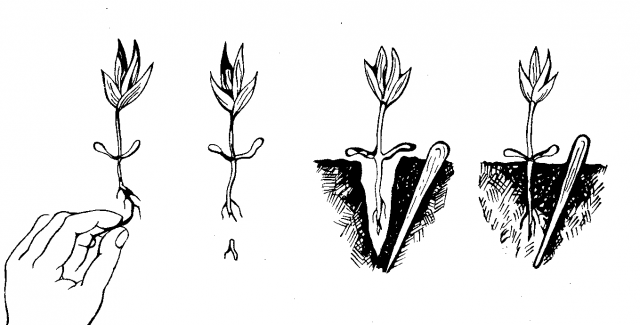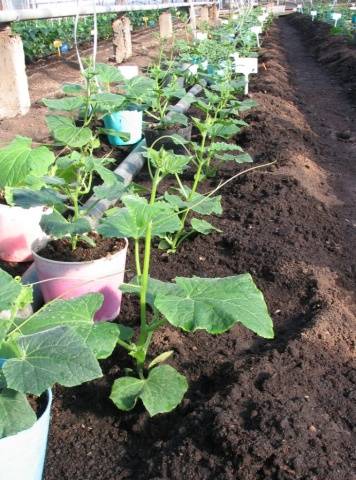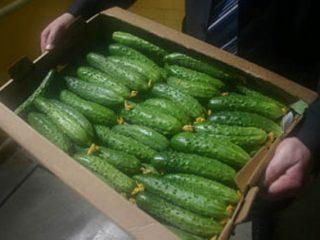Content
Much is known about the process of picking vegetable seedlings, but this information mainly concerns tomatoes and peppers. But as for whether it is necessary to pick cucumber seedlings, the opinions of gardeners were divided into two almost equal parts. The difficulty lies in the fact that cucumbers have very delicate roots, and the separation of the root system from the ground is painful. Injured seedlings rarely survive, so extreme care is required when picking seedlings.
What is picking and why is it needed?
Picking is the transfer of seedlings from one container to another, or directly into the ground. During picking, seedlings are captured along with part of the soil; this is a very important condition that helps the plant maintain the integrity of the root system and better adapt to a new location.
There are a number of indications for picking, but the main one is hardening of plants.
After being transferred to other conditions, the seedlings adapt, after which the weak seedlings die, and the strong ones become even stronger. This approach provides cucumbers with resistance to diseases and low temperatures, preparing them for “life” in the open ground.
How cucumbers tolerate picking
One of the characteristics of cucumbers is their poorly developed root system.The roots are so thin and frail that it is better not to touch them again. It is for this reason that many gardeners refuse to pick cucumber seedlings.
It is preferable to immediately plant the seeds in disposable containers: paper or peat cups. One or two seeds are placed in small containers and grown for 2 to 4 weeks.
After this, the seedlings are transferred to the greenhouse, greenhouse or open ground, without diving. In this case, cups made of paper or plastic are cut, and peat cups are buried along with the seedlings.
When is picking cucumbers necessary?
Of course, if the situation allows, it is better to prefer planting seedlings in the ground, bypassing the picking process. But there are a number of cases when the method of transplanting from cups is not suitable, these include:
- Cases where seeds were sown in a container that was too large or deep. If the size of the container exceeds the required size, the cucumbers will feel uncomfortable there; the plants may rot, turn yellow, or “sit still,” that is, not grow. In such a situation, in order to save at least part of the seedlings, they are dumped into more suitable containers, only a separate container is chosen for each plant.
- When seedlings don't get enough sunlight. Sometimes the weather lets gardeners down, the days are cloudy and rainy, and the sun rarely appears from behind the clouds. In low light conditions, any seedling begins to stretch upward, as a result it overgrows, becomes weakened and brittle. To prevent this from happening, cucumbers can be picked.In this case, the plant is buried deeper into the soil, thereby shortening it. This method will strengthen the root system, since additional roots will appear on the buried stem.
- When the gardener miscalculated the planting time seedlings into the ground (or the weather has not returned to normal). To transplant seedlings into open ground, the ground must warm up to 16 degrees; a lower temperature will kill the cucumbers. 30-day-old seedlings are planted in the ground so that they do not outgrow; they can be planted, thereby delaying the time of planting.
- If plants or soil are infected. Even one seedling with symptoms of a fungal or infectious disease becomes a reason to transplant seedlings from the entire box. The same rule applies to soil - contaminated soil can destroy cucumbers; it must be replaced with healthy soil.
- To carry out natural selection They also pick cucumbers. Thus, only the strongest plants survive in the new location, which guarantees a high yield and makes the gardener’s work more efficient.
In any of these cases, you cannot do without picking cucumbers. When there is no indication for this, it is better to avoid replanting seedlings.
How to pick cucumbers correctly
If a pick is still inevitable, you need to carry it out as competently as possible. This is the only way to preserve as many healthy and strong plants as possible.
So, the transplantation process consists of several stages:
- First of all, it is necessary prepare containers for seedlings. They should be larger than those in which the cucumber seeds were sown. It is better to prefer paper or peat cups, since repeated replanting with separation from the ground can end badly for cucumbers.
- Prepare the soil. This can be a purchased substrate intended for vegetable seedlings or specifically for cucumbers. Or you can prepare this mixture yourself. To do this, take turf soil, rotted sawdust, organic fertilizer, and peat. All this needs to be mixed and left for the winter, that is, such soil must be prepared in the fall. Instead, you can get by with just ash, which is added to the turf soil. The main thing is that the soil for cucumber seedlings is loose, air- and water-intensive, and nutritious.
- The soil is scattered into containers, filling them about two-thirds, and leaving them for several days to compact.
- A few hours before picking, water the soil Make small (2-3 cm) indentations with warm water and your finger.
- The seedlings are also watered generously with warm water 2 hours before picking. The soil should be completely saturated with moisture, however, care must be taken to ensure that the soil is not washed away from the roots.
- Cucumber seedlings must be removed with extreme caution.. Under no circumstances should you touch the fragile stem with your fingers. It is allowed to hold a cucumber seedling by a clod of earth between the roots or by the cotyledon leaves. The seedlings are dug up along with a lump of earth; it is better to do this with a small spatula, a tablespoon or large tweezers.
- The root of a plant removed from the ground must be inspected. If it is severely damaged or shows signs of disease or rot, it is better to throw away the cucumber seedling.Cucumbers also do not need roots that are too long; in this case, they are pinched - the longest central root is cut off with your nails. Pinching will allow lateral roots to develop, which will make the seedlings stronger and stronger.
- The seedlings are placed in the prepared hole and sprinkle with earth, while the soil is slightly compacted, pressing it around the stem. This will promote better adhesion of the roots to the soil.
- After planting all the seedlings, the seedlings are watered abundantly. This should only be done with warm water, preferably pre-settled.
- For the first time, pickled seedlings it is better to cover with a special white cloth. The covering material will protect the cucumbers from the drafts they so dislike and normalize the soil temperature.
Favorable conditions for picked seedlings
Everyone knows that two factors are very important for a capricious cucumber: heat and humidity. In the first days after picking, the seedlings should be kept warm; the temperature should not fall below 20 degrees. The air humidity level should reach 80%. This can be achieved by installing a household humidifier or placing a container of water next to the radiator.
After a few days, when the cucumber seedlings have taken root well, the temperature and humidity can be gradually reduced. The limit value for cucumbers is 16 degrees.
There are no clear rules for growing cucumber seedlings. Experienced gardeners say that there is no need to pick cucumbers, and if you do this, then only when absolutely necessary and in compliance with all the rules.
















